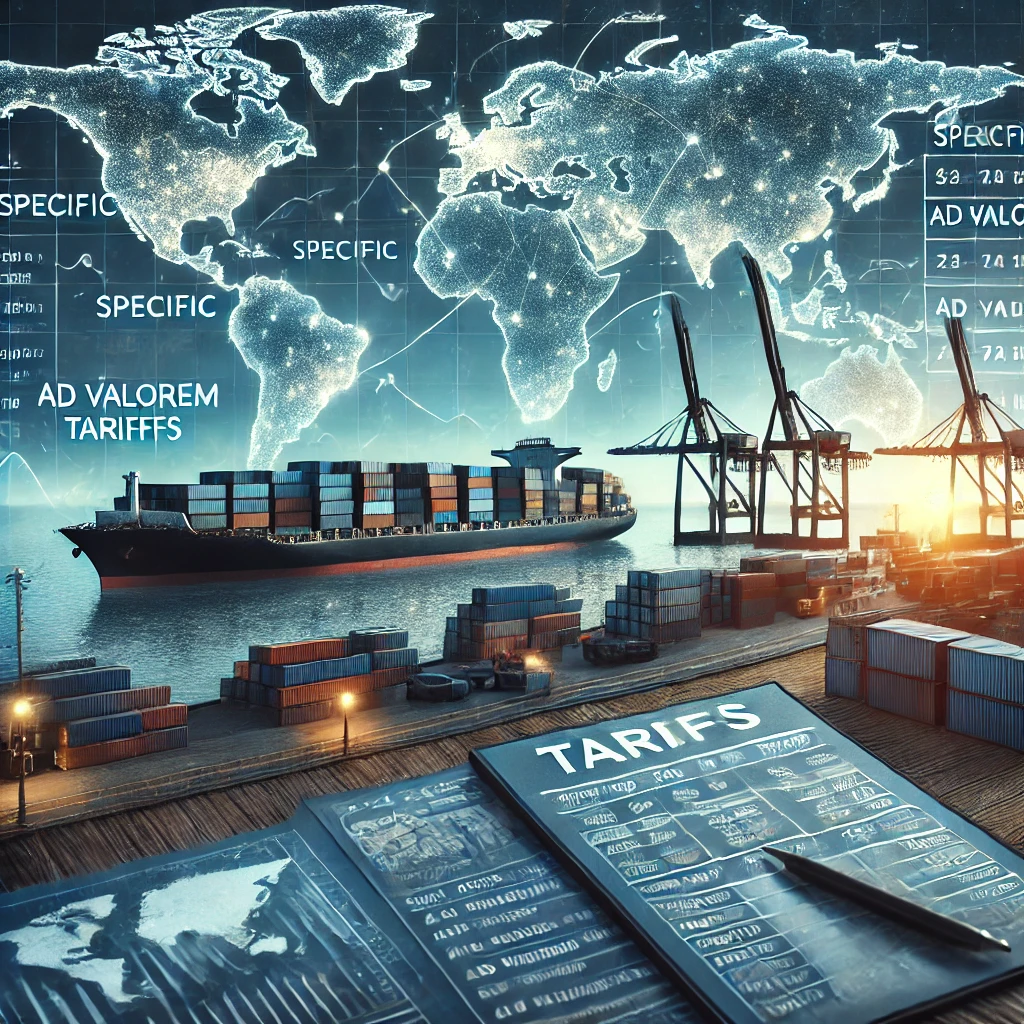China's Export Dependence: Vulnerability To Rising Tariffs

Table of Contents
The Magnitude of China's Export Dependence
China's economy is deeply intertwined with global trade. Understanding the extent of this dependence is crucial to grasping the potential impact of tariff increases.
Export Share in GDP
Exports constitute a substantial portion of China's GDP, making it highly vulnerable to external economic shocks. A decline in exports directly translates to a slowdown in economic growth and job creation.
- Export contribution to GDP: Over the past decade, exports have consistently contributed between 18% and 25% to China's GDP. This significant percentage showcases the economy's sensitivity to global trade fluctuations.
- Comparison with other major economies: Compared to other major economies like the US or Germany, China’s reliance on exports is significantly higher. This makes it more susceptible to tariff-related challenges.
- Implications of a decline in exports: A 5% decline in exports could trigger a significant contraction in overall GDP growth, potentially leading to widespread job losses, particularly in export-oriented manufacturing sectors. This could also destabilize related industries and lead to a ripple effect throughout the Chinese economy.
Key Export Sectors
China's export basket is diverse, but certain sectors are particularly vulnerable to tariffs.
- Top Export Sectors: Electronics, textiles and clothing, machinery, and mechanical appliances consistently rank among China's top export sectors. These sectors generate substantial revenue and employment.
- Export Values: The exact figures fluctuate yearly, but these sectors collectively account for a significant percentage of China's total export value. Detailed data can be found in reports from organizations like the World Trade Organization (WTO).
- Impact of Tariffs on Specific Sectors: Tariffs imposed on Chinese electronics can impact global tech supply chains. Tariffs on textiles and clothing intensify competition with other low-cost producers. Tariffs on machinery affect the country's industrial competitiveness. The specific impact depends on the size of the tariff, the availability of substitutes, and the elasticity of demand.
Impact of Rising Tariffs on Chinese Exports
Rising tariffs pose a multifaceted threat to China's export-oriented economy. The effects are both direct and indirect, and can lead to significant economic disruptions.
Direct Effects of Tariffs
Tariffs directly increase the price of Chinese goods in international markets, reducing their competitiveness against products from other nations.
- Examples of Tariffs: The US-China trade war, for example, saw significant tariffs imposed on a wide range of Chinese goods, impacting everything from consumer electronics to agricultural products.
- Impact on Price and Demand: These tariffs increased the prices of Chinese goods in the US market, making them less attractive to consumers and reducing market share. Consequently, Chinese businesses experienced reduced profits and sales.
- Market Share Reduction: Increased prices due to tariffs can lead to a decrease in market share, particularly in price-sensitive markets. This forces Chinese exporters to seek alternative markets or reduce production.
Indirect Effects and Supply Chain Disruptions
The consequences of tariffs extend beyond the directly affected sectors, creating disruptions throughout China's intricate supply chains.
- Impact on Raw Material Costs: Tariffs on imported raw materials increase production costs for Chinese manufacturers, reducing profitability and potentially leading to price increases in the final product.
- Production Process Disruptions: Trade tensions can disrupt logistics, causing delays in production and delivery. This adds further cost pressures and uncertainty for businesses.
- Potential for Factory Closures and Job Losses: If the negative economic consequences persist, businesses may be forced to reduce production, lay off workers, or even close their factories. This would have significant social and economic implications.
Retaliatory Measures and Trade Wars
The imposition of tariffs can easily trigger retaliatory measures from China, escalating trade tensions and harming global trade.
- Examples of Retaliatory Measures: Past trade wars have involved both sides imposing tariffs on each other's goods. This often leads to a cycle of escalation and harms global economic growth.
- Impact on Global Economic Growth: Trade wars create uncertainty and reduce global investment. This can trigger a global recession and destabilize economies worldwide.
- Potential for Further Escalation: The potential for further escalation remains a significant concern, with long-term negative consequences for China and the global economy.
Strategies for Reducing China's Export Dependence
Addressing China's export dependence requires a multi-pronged strategy focused on internal growth and diversification.
Boosting Domestic Consumption
Reducing reliance on exports necessitates shifting the focus towards domestic consumption. This requires stimulating domestic demand.
- Policy Measures: The Chinese government can implement policies to increase disposable income, improve social welfare, and invest heavily in infrastructure projects to boost domestic consumption.
- Challenges: Shifting consumer behavior and encouraging a culture of greater domestic consumption is a significant challenge. This will likely require long-term, sustained policy efforts.
- Feasibility: While challenging, increasing domestic consumption is essential for long-term economic stability and reducing vulnerability to external shocks.
Developing High-Value Added Industries
Moving towards higher-value manufacturing and technological innovation can reduce vulnerability to price competition.
- High-Profit Margin Industries: Investing in sectors like technology, pharmaceuticals, and advanced manufacturing can lead to higher profit margins and less reliance on low-cost production.
- Investment in R&D: Increased investment in research and development is essential to drive innovation and technological advancement, enabling China to compete in higher-value markets.
- Skilled Labor Development: Investing in education and training to develop a skilled workforce capable of supporting these high-value-added industries is crucial for success.
Diversification of Export Markets
Reducing reliance on specific markets, like the US, necessitates exploring new export destinations.
- Alternative Export Markets: China can focus on expanding its trade relations with countries in Africa, Southeast Asia, and Latin America to diversify its export markets.
- Challenges of Entering New Markets: This will require negotiating new trade agreements, adapting products to meet local demands, and overcoming potential logistical challenges.
- Trade Agreements and Market Access: Securing access to new markets requires proactive engagement in international trade negotiations and building stronger diplomatic relationships.
Conclusion
China's export dependence presents a significant vulnerability to rising global tariffs. The potential economic consequences—reduced growth, job losses, and trade wars—necessitate a strategic shift. This requires a focus on greater domestic consumption, development of high-value-added industries, and diversification of export markets. Ignoring the challenges of China's export dependence could have severe ramifications for both its economy and the global trading system. Addressing China's export dependence proactively is crucial for ensuring sustainable and resilient economic growth. China needs to strategically adapt its economic model to lessen its reliance on exports and foster a more balanced and resilient economy.

Featured Posts
-
 Conclave 2023 Evaluating Pope Franciss Impact
Apr 22, 2025
Conclave 2023 Evaluating Pope Franciss Impact
Apr 22, 2025 -
 Zuckerberg And Trump A New Era For Facebook And Politics
Apr 22, 2025
Zuckerberg And Trump A New Era For Facebook And Politics
Apr 22, 2025 -
 Stock Market Today Dow Futures Fall Dollar Weakens Amid Trade Tensions
Apr 22, 2025
Stock Market Today Dow Futures Fall Dollar Weakens Amid Trade Tensions
Apr 22, 2025 -
 Circumventing Tariffs A Look At Tik Toks Influence
Apr 22, 2025
Circumventing Tariffs A Look At Tik Toks Influence
Apr 22, 2025 -
 Trumps Trade Offensive And The Future Of Us Financial Primacy
Apr 22, 2025
Trumps Trade Offensive And The Future Of Us Financial Primacy
Apr 22, 2025
